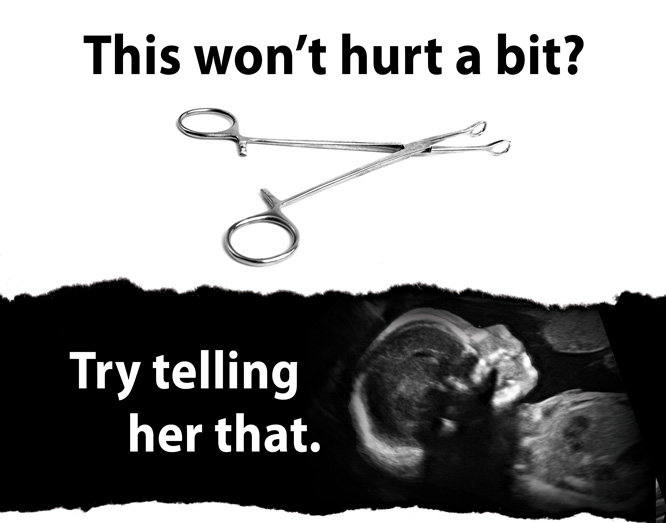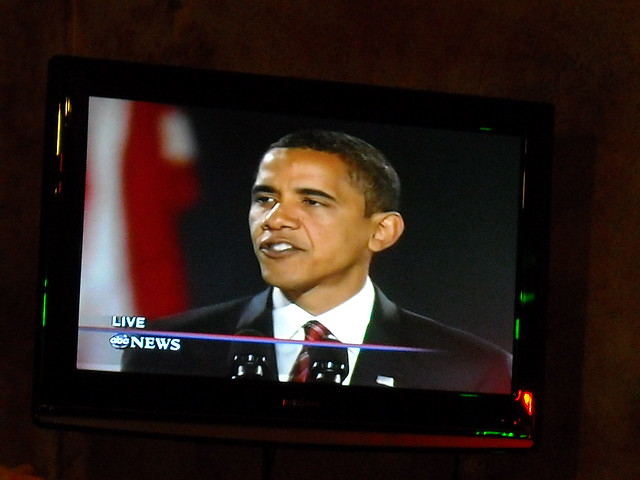
All citizens should support Pain-Capable Child Protection Acts because the unborn can feel pain prior to birth, and laws protecting them from pain are constitutional.
The United States Congress and the state legislatures of Michigan and New Hampshire are considering Pain-Capable Child Protection Acts. These acts would prohibit almost all abortions at twenty weeks post-fertilization and beyond. Five states—Nebraska, Kansas, Oklahoma, Alabama, and Idaho—already have such laws on the books. These laws are premised on the idea that an unborn child's capacity to feel pain, independent of fetal viability, is sufficient to establish the humanity of the child and to sustain a limited prohibition on abortion. Like partial-birth abortion bans, these laws advance public recognition of the unborn child's humanity and should be supported.
Objections to Pain-Capable Child Protection Acts generally fall into two categories. First, some philosophers and doctors dispute that the unborn child can "feel" pain prior to birth. Second, many abortion-rights advocates argue that, even if fetal pain exists, the Constitution does not permit states to limit access to abortions merely to prevent inflicting pain on a pre-viable fetus. Upon close examination, neither of these objections is persuasive.
Can Unborn Children Feel Pain?
At the heart of the debate over whether the unborn child feels pain is the definition of "feels." Some physicians and philosophers restrictively define "feels" to mean only those responses that reflect some self-awareness or "conscious appreciation of pain." If consciousness is absent, they argue, researchers can at best conclude that the human fetus "reacts to physical stimulation."
Years ago similar arguments persuaded doctors that newborn children could not feel pain because they evidence no self-consciousness. It was common practice to perform early post-natal surgeries such as circumcision with no pain relief, notwithstanding the child's screams and struggles. Thankfully, the medical profession now recognizes the capacity of newborns to feel pain, and newborns are regularly anesthetized prior to surgery.
A second group of doctors and scientists supports recognition of fetal pain on the basis of physiological and behavioral responses to painful stimuli. They argue that self-awareness is not the standard used to determine whether comatose or profoundly disabled individuals feel pain. In these cases observed physiological and behavioral responses to stimuli are accepted as reliable indicators of pain. Similarly, physiological and behavioral responses to noxious stimuli observed in the unborn should be accepted as evidence that they feel pain.
Unborn children have been observed to move away from needles and other sharp objects inserted into the womb, as stress hormones flood their tiny bodies. Scientists have also discovered that prolonged intrauterine exposure to painful stimuli is associated with long-term harmful neurodevelopmental effects, such as altered pain sensitivity and increased risk of emotional, behavioral, and learning disabilities later in life. For these reasons use of fetal anesthetic is now routine for perinatal surgeries. Use of fetal anesthetic renders the unborn child more compliant during surgery and facilitates post-operative healing.
A third group of physicians and scientists answers the question whether the unborn feel pain by pointing to the nervous system's development. From this perspective, the development and function of various brain regions is the key to determining whether the unborn experience pain. While simple reflex responses can be observed as early as nine weeks of gestation (or seven weeks post-fertilization), most scientists believe that the brain is too immature at this early time to detect and respond to pain. But just a few weeks later, at fourteen weeks of gestation or twelve weeks post-fertilization, physicians argue that pain perception begins when the lower brain stem and thalamus have developed. These scientists point to evidence that children born without the bulk of the cerebral cortex, those with hydranencephaly, nevertheless experience pain.
Other physicians assert that there must be a cortex-thalamus connection to experience pain, placing fetal pain perception at somewhere between twenty and twenty-four weeks of gestation or eighteen to twenty-two weeks post-fertilization. The Pain-Capable Child Protection Acts are premised on this last and more conservative theory, which means that the first objection noted above—that these acts are based on inconclusive scientific evidence—is not compelling. These acts seek to limit abortions only at or after twenty weeks post-fertilization, based on brain development, and not at earlier stages of development when physicians can observe fetuses' physiological reactions to painful stimuli but can question the involvement of the brain.
Is it Constitutional to Protect Unborn Children from Pain?
Now to the second objection: opponents of Pain-Capable Child Protection Acts routinely assert that even if an unborn child can feel pain, it is unconstitutional to limit abortion prior to the child becoming capable of living independently outside the womb for any reason other than protection of the woman's health. Even if fetal pain exists, they argue that the pain is constitutionally irrelevant, and point to the absence of any case to the contrary.
Opponents are correct when they say that the Supreme Court has never upheld an abortion ban on the basis of an unborn child's pain while being aborted. Yet it is equally true that the Court has never been asked whether the state's interest in protecting unborn children who can feel pain is sufficiently compelling to support a limited ban on abortion.
The Court has always recognized the state's compelling interest in protecting viable unborn children. In Webster v. Reproductive Services the Court identified viability as occurring at twenty-three to twenty-four weeks of gestation. In Roe v. Wade the Court explained why the state could prohibit abortion of viable unborn children:
This is so because the fetus then presumably has the capability of meaningful life outside the mother's womb. State regulation protective of fetal life after viability thus has both logical and biological justifications. If the State is interested in protecting fetal life after viability, it may go so far as to proscribe abortion during that period, except when it is necessary to preserve the life or health of the mother.
This viability rule remains the law today.
Pain-Capable Unborn Child Protection Acts do not seek to challenge this holding in any way. Rather these acts seek to establish a separate and independent state interest in preserving the lives of unborn children at the point when they are capable of feeling pain. While the outcome of potential litigation is by no means certain, there is reason to believe that limited protection of pain-capable unborn children may be constitutional.
The Case of Justice Kennedy
Abortion cases typically divide the Court, with many of the most significant rulings being 5–4 or plurality opinions with no single opinion endorsed by a majority of the justices. In recent abortion cases such as Planned Parenthood v. Casey, upholding informed consent and mandatory reporting laws, and Gonzales v. Carhart, upholding the federal partial-birth abortion ban, Justice Kennedy's views determined the outcomes of the cases. This suggests that whether fetal pain is accepted as an independent developmental marker of the humanity of the child may turn on Justice Kennedy's position on the issue.
Justice Kennedy's opinions in the two cases involving partial-birth abortion bans provide valuable insight into his possible ruling on the constitutionality of Pain-Capable Child Protection Acts. In Stenberg v. Carhart, the first partial-birth abortion case, Justice Kennedy emphasized that it was "inappropriate for the Judicial Branch to provide an exhaustive list of state interests implicated by abortion," and that "Casey is premised on the States having an important constitutional role in defining their interests in the abortion debate." Justice Kennedy described the state's interest in protection of fetal life as substantial at all points. He wrote, "Casey struck a balance that was central to its holding, and the Court applies Casey's standard here. A central premise of Casey's joint opinion . . . is that the government has a legitimate, substantial interest in preserving and promoting fetal life …"
In Gonzales v. Carhart, the second partial-birth abortion ban case, Justice Kennedy wrote the majority opinion for the Court, upholding the federal law banning partial-birth abortions in both the second and third trimesters of pregnancy. The law made no distinction based on viability. "The Act does apply both previability and postviability because, by common understanding and scientific terminology, a fetus is a living organism while within the womb, whether or not it is viable outside the womb." Justice Kennedy again emphasized the state's interest in the fetus, repeating his earlier statement in Stenberg v. Carhart that "A central premise of Casey's joint opinion . . . is that the government has a legitimate, substantial interest in preserving and promoting fetal life."
Even Justice Stevens, who during his tenure on the Court repeatedly voted to strike down abortion regulations, listed the "organism's capacity to feel pain" as a reason why "the State's interest in the protection of an embryo increases progressively and dramatically." He noted that "the development of a fetus—and pregnancy itself—are not static conditions, and the assertion that the government's interest is static simply ignores this reality."
Activists argue that it is unconstitutional for legislatures to limit abortion in the absence of unanimimous scientific opinion on whether the unborn child feels pain. Even though (as suggested above) there is a growing body of research that unborn children can feel pain at twenty weeks of gestation, scientists' disputes about whether this is true do not imply the correctness of abortion activists' claim that this disagreement makes the Pain Capable Child Protection Acts unconstitutional. Their second objection to these acts also turns out to be a weak one.
As Justice Kennedy observed in Gonzales v. Carhart, laws can stand even if medical or scientific uncertainty prevents consensus about when the unborn feel pain:
The question becomes whether the Act can stand when this medical uncertainty persists. The Court's precedents instruct that the Act can survive this facial attack. The Court has given state and federal legislatures wide discretion to pass legislation in areas where there is medical and scientific uncertainty.
This traditional rule is consistent with Casey, which confirms the State's interest in promoting respect for human life at all stages in the pregnancy.
There is a substantial body of scientific and medical evidence that an unborn child feels pain at twenty weeks post-fertilization. The fact that the existence of fetal pain is disputed does not preclude legislative action. As Justice Kennedy noted, "Medical uncertainty does not foreclose the exercise of legislative power in the abortion context any more than it does in other contexts."
Anaesthetize or Protect from Killing?
Defenders of abortion argue that even if the previable child can feel pain, the proper response is to anaesthetize the fetus, not ban the abortion. They maintain that this response to fetal pain eliminates the harm of unnecessary suffering while preserving the woman's ability to obtain an abortion. This response by abortion activists reveals the fundamental conflict that underlies abortion jurisprudence—the conflict that the Court was unwilling to resolve in Roe and has avoided resolving in each case since—the question of which characteristics necessarily compel recognition of the unborn as members of the human family.
Is the pain that the unborn child may endure during abortion similar in nature to the pain a dog or horse or some other domesticated animal feels when it is put down at the will of the owner? If so, then we must surely act to mitigate that pain, but merely mitigating that pain need not limit the woman's ability to kill her unborn child.
But if we consider human pain unique and something of greater moral import than the pain of animals, even the pain of a beloved family pet, we may, in fact must, seek to eliminate the pain through limiting the action that causes that pain. Opponents of the death penalty commonly argue that executing a convicted criminal is unnecessary and cruel given the capacity of society to protect itself in other ways. If our common capacity to suffer is a moral underpinning of our prohibition of torture and cruel forms of deadly punishments, we must at least extend similar protections to the unborn members of the human family.
Recognition of a compelling state interest in the protection of pain-capable unborn children does not require the Court to reject a woman's liberty interest in obtaining an abortion or the balancing framework of Casey. It only asks the Court to recognize the legislature's ability to use new scientific evidence that supports a strong state interest in regulating abortions at twenty weeks after fertilization. Pain-Capable Unborn Child Protection Acts modestly expand upon the states' interests in the protection of fetal life and affirm the value of unborn life as recognized in the latest Supreme Court cases addressing abortion.
Contact: Teresa Collett
Source: The Witherspoon Institute


























